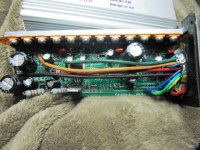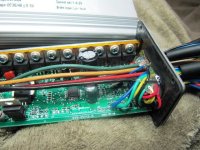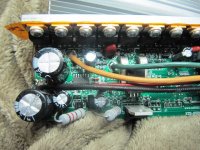docnjoj
1 GW
Well it worked with the wheel elevated except for a few hiccups at higher speeds. On the road it worked for a few minutes but very low power, then I figured out cruise control and it worked slow but OK for another few minutes. Then it kept putting on it's brakes and then going again (no brake sensor is fitted yet) and then it failed completely.
Possible failure points:
1. Wrong phase/halls
2. ?
I will continue to test it on the stand with the wheel elevated and then test it with the meter removed and appropriate wires connected.
Not exactly auspicious or plug-n-play.
Suggestions welcome from folks that have S12S or other similar controllers or just know a lot more than I do (not too hard to do)
otherDoc
Possible failure points:
1. Wrong phase/halls
2. ?
I will continue to test it on the stand with the wheel elevated and then test it with the meter removed and appropriate wires connected.
Not exactly auspicious or plug-n-play.
Suggestions welcome from folks that have S12S or other similar controllers or just know a lot more than I do (not too hard to do)
otherDoc






